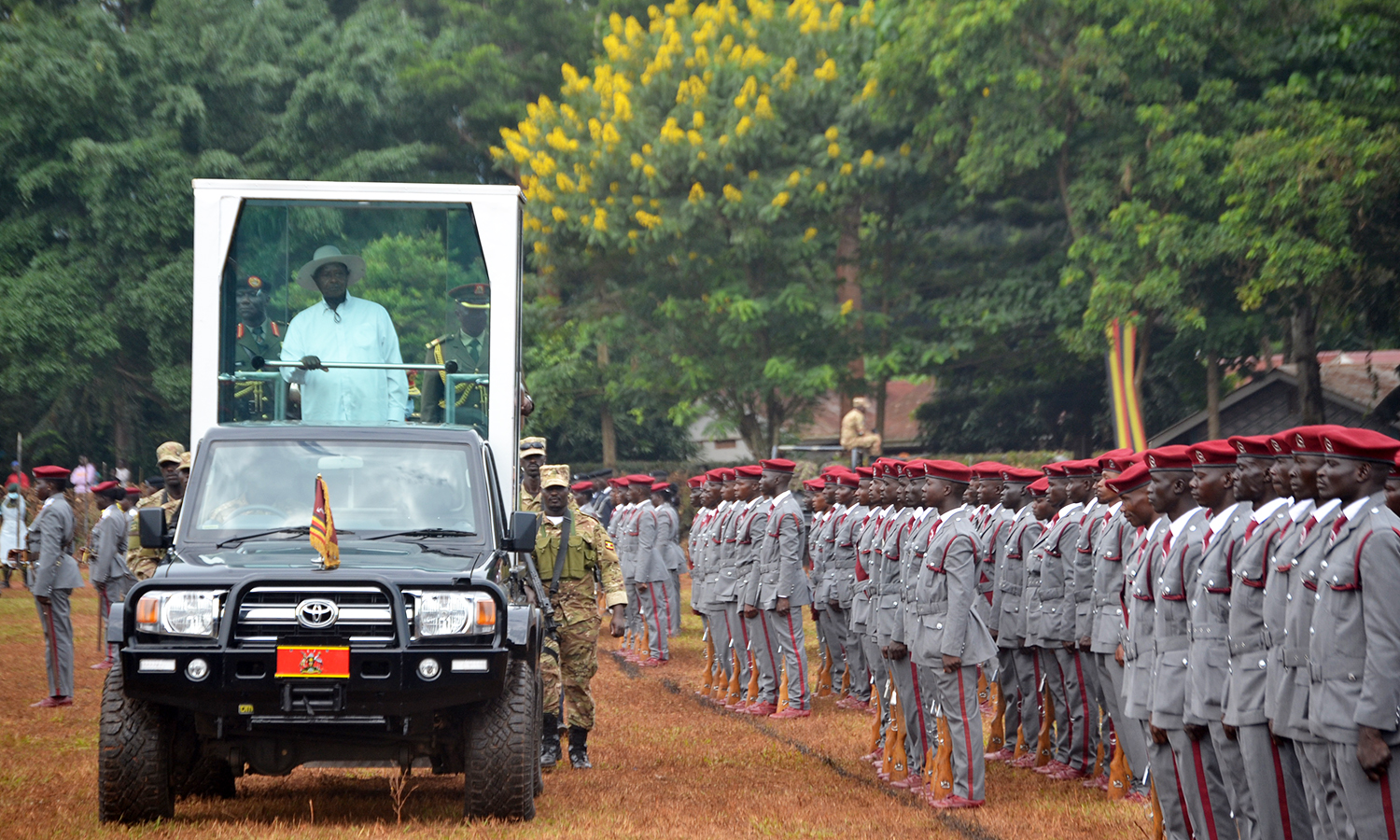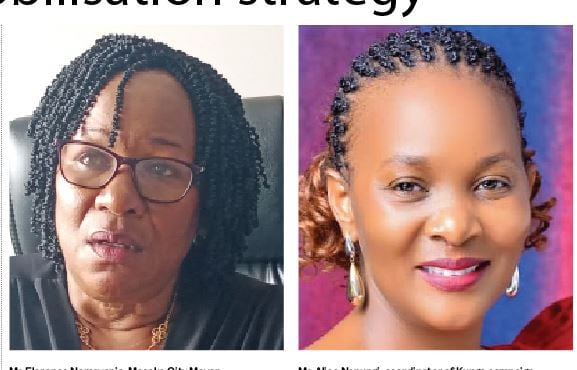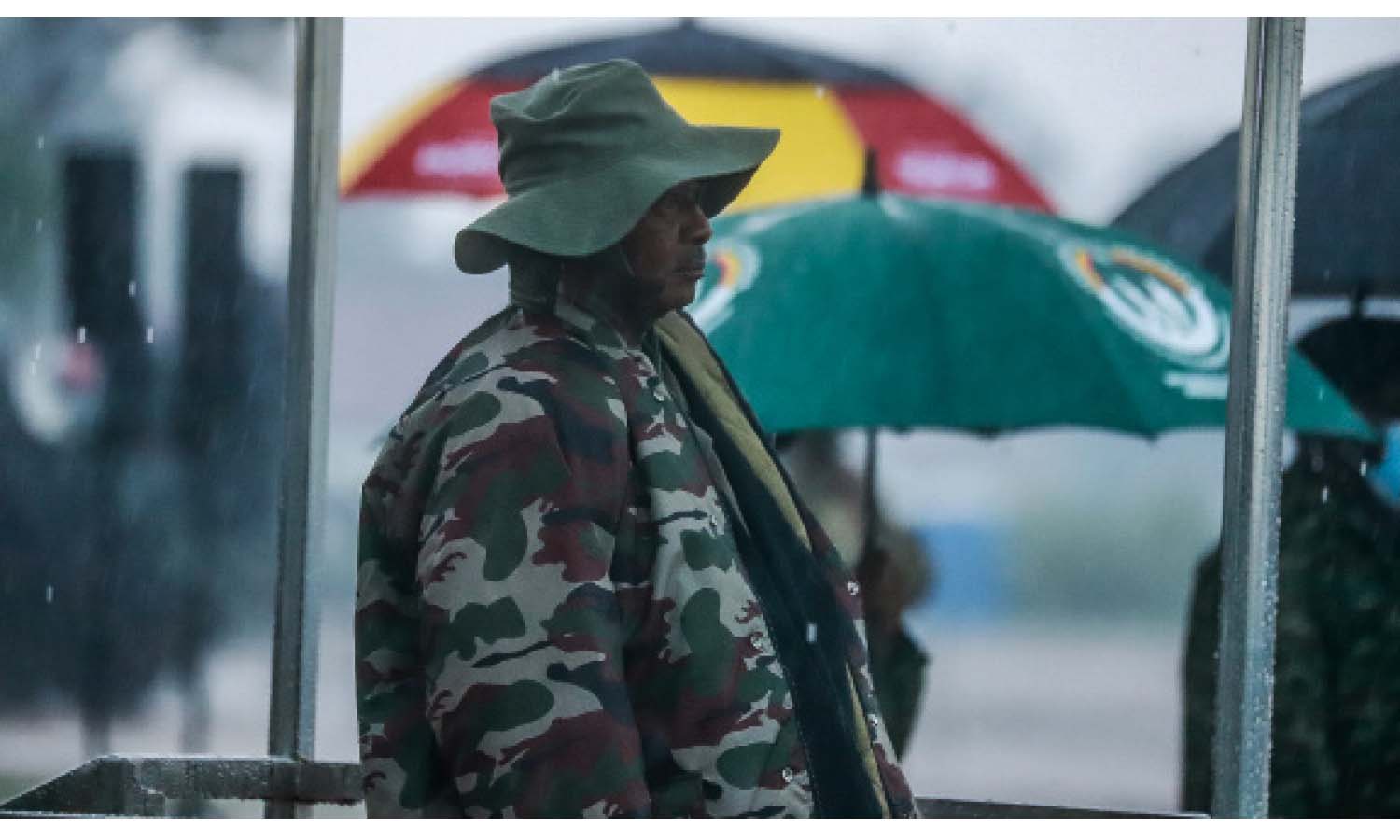Prime
Inside NRM charm offensive in Busoga

President Museveni inspects troops during the 38th NRM anniversary celebrations at Wakitaaka, Jinja North Division, in January 2024. PHOTO/ DENIS EDEMA
What you need to know:
- The January 14, 2021, election was a watershed in the political history of Busoga of the last 38 years. The region turned red after so many years of being yellow. The result was considered so bad that it was deemed necessary to carry out a post-election assessment to establish why, writes Isaac Mufumba.
President Museveni has been in Busoga sub-region twice in a period of 12 days. First, he was in Jinja City on January 26 when he presided over the 38th anniversary of the National Resistance Movement’s (NRM) rise to power, and then Bugweri District on February 6 where he presided over the 43rd Tarehe Sita celebrations.
Save for previous occasions when Mr Museveni has been in the region as part of nationwide tours to popularise poverty alleviation programmes such as Entandikwa and Bona Bagagawale, this time he has been in Busoga so many times in so short a period of time.
We should also not forget that the 2023 Labour Day celebrations were held in Namutumba District. Prior to that, he had on October 29, 2022, presided over the Bishop Hannington Day celebrations in Kyando, Mayuge District. Bishop James Hannington was murdered in 1885 on the orders of Kabaka Mwanga.
Too many forays into and too many national celebrations in one region is so short a period of time, one would say. What then is the President chasing in Busoga ?
Prof Paul Wangoola, a former Makerere University don and former member of the National Consultative Council (NCC) which served as Uganda’s Parliament following the ouster of former president Idi Amin, believes that this is part of a sustained campaign by Mr Museveni and the ruling NRM to regain Busoga.
“He (President Museveni) is without any doubt investing time and resources in order to regain ground lost during the 2021 elections,” Prof Wangoola says.
The director for communication at the NRM Secretariat, Mr Emmanuel Dombo, concedes that a charm offensive is on.

President Museveni in Jinja with students. Photo/File
“The celebrations were national, but that presence enhances the face of government and the party in the minds of the people. The number of activities of government and the party’s going to an area is supposed to improve the public relations of government and the party, but it is also intended to explain delivery of government programmes and we debunk the lies from the Opposition,” Mr Dombo says.
Watershed
It should, however, be noted that the January 14, 2021, election was a watershed in the political history of Busoga of the last 38 years. The region turned red after so many years of being yellow and chanting “no change”.

NUP party leader Robert Kyagulanyi, alias Bobi Wine, addresses supporters in Mayuge District on September 4, 2023. PHOTO/FILE
The presidential candidate of the National Unity Platform (NUP), Mr Robert Kyagulanyi, alias Bobi Wine, beat Mr Museveni, the presidential candidate of the ruling NRM, to the vote in Busoga.
Mr Kyagulanyi garnered 437,059 votes against Mr Museveni’s 404,862 votes.
The NRM candidate was defeated in the districts of Kamuli, Luuka, Iganga, Jinja, Bugweri, Bugiri, Namayingo and Mayuge. He only won in Buyende, Kaliro and Namutumba.
The result was considered so bad that it was deemed necessary to carry out a post-election assessment to establish why things had gone south in both Busoga and Buganda.
NRM secretary general Richard Todwong initially downplayed the significance of the post-election assessment exercise.
“This is a normal exercise which is aimed at establishing why things went the way they did. Was it due to internal weaknesses or external factors? We need to have answers so that we prepare early. I should, however, say any serious party does that kind of thing after every election,” Mr Todwong said in a previous interview.
However, the fact that the party leadership held a week-long retreat in Jinja City in November 2022 to discuss a report of findings from the assessment exercise suggest that the party did not take the losses lightly.
Findings
It was not possible for Monitor to establish what the findings from the research had revealed, but Mr Daudi Migereko, a former Cabinet minister and Member of Parliament for Butembe County for 15 years who participated in the process, gave an insight into what the initial research had revealed.
“We did some work and handed over our findings which pointed to harassment of fishing communities on the lakes, poverty and unemployment. But the secretariat constituted another team to carry out another exercise,” Mr Migereko said in a previous interview.
What is it then that the other team discovered? If what Mr Dombo told Monitor is anything to go by, it would appear that the party partially blames its top cadres in the region for the reversals suffered in 2021.

Mr Emmanuel Dombo. Photo/Courtesy
“We performed badly in some of these areas because of the excesses of government in some areas, and also because of failure by our leaders to explain certain government programmes,” Mr Dombo says.
Some analysts, however, argue that the best approach for the NRM would have been to tackle poverty and unemployment and the factors fuelling them.
Failure to fix road and transport infrastructure, especially failure to fund the tarmacking of the Jinja-Kamuli via Mbulamuti and the 58km Kamuli-Bukungu roads; provide a ferry to link Busoga to Lango and Teso regions and failure to provide $1.5 million for the establishment of a call centre are some of those causes that are believed to be fuelling poverty and unemployment.
Mr Dombo agrees that poverty is a major factor in Busoga, but says tarmac roads are not the panacea.
“Poverty cannot be answered by doing a tarmac road. Produce would move on a good murram road. Government has given each district Shs1 billion to make their roads motorable and accessible so that those who are in production can meet the market and those who need to access regional referral hospitals access them,” Mr Dombo argues.

Bobi Wine (right) welcomes former Kigulu South MP Andrew Kiiza Kaluya to NUP in November, 2023. Photo/Michael Kakumirizi
Sugarcane question
The biggest problem though is around sugarcane. Mr Migereko told Sunday Monitor that “failure to secure markets for the farmer’s sugarcane at a time when a majority of farmers had successfully turned to sugarcane growing” had been identified as one of the factors that contributed to NRM’s defeat in 2021.
The problem has never been solved. Many farmers have vast acres of the crop, but have no market for it. It has been due, in part, to this that prices have in recent weeks dropped from around Shs220,000 per tonne to between Shs160,000 and Shs170,000 per tonne.
A mill that will not come
Mr Museveni promised during a 2019 interface with sugarcane farmers that government would help them set up a sugar mill and also avail the region Shs12 billion for two skilling centres related to the sugar industry.
The interventions that would perhaps have helped farmers market their produce have not been fulfilled.
Representatives of the farmers are said to have at some point met then Prime Minister Ruhakana Rugunda and Ministry of Trade officials in July 2020.
Dr Rugunda is said to have tasked the former minister for the Presidency, Ms Esther Mbayo, to follow up the matter with the Ministry of Finance. Some farmers were not impressed.
“Why would the prime minister direct Ms Mbayo to follow up the matter with the Ministry of Finance? I thought that Dr Rugunda was best placed, as the prime minister, to direct the Ministry of Finance to avail the funds,” one of the farmers told Sunday Monitor in a previous interview.
Could this have fed into the election narrative and outcome? That we may never know.
Curse or blessing?
One of the talking points around the NRM day celebrations was the “confession” of one Moses Ssimbwa, who claimed to have been lined up by the Opposition to travel the world and besmirch the NRM’s human rights record.
It attracted the attention of Mr Museveni who could be seen clapping as Ssimbwa promised to meet him and fill him in on the details of the Opposition’s shenanigans.
The organisers have been under criticism on social media since January 26. Critics argue that they missed the opportunity to use the region’s interface with the President to make a case for Busoga.

Ms Salaamu Musumba. Photo/Courtesy
Ms Salaamu Musumba, the former deputy national chairperson of the Forum for Democratic Change (FDC), who was also once an MP representing Bugabula South and also served as Kamuli District chairperson, argues that a similar opportunity that came with the Tarehe Sita celebrations had also passed the region by.
“We missed a platform and opportunity to represent and showcase ourselves, speak for ourselves and speak about ourselves and it comes down to leadership,” Ms Musumba says.
Wanting leadership?
The biggest question has always been why Mr Museveni has not been taking the lead in ensuring that his promises to the region are fulfilled.
Whereas there are those that have questioned his intentions for Busoga’s interests, some of his apologists in the region say he is a good man with good intentions who has been let down by bad lieutenants.
Support for the latter position has lately been coming from a very highly unlikely source – Ms Musumba.
“Please do not blame Museveni. Some of our leaders have had the opportunity. They have held positions and have been in the right positions, at the right time and with the right capability, but their priority has been self-preservation and not Busoga,” Ms Musumba says.
Mr Dombo does not allow to be dragged into arguments around who is to blame for Busoga’s situation. He instead calls on the people of Busoga to unite and work for the region’s development.
“We encourage the people of Busoga to work through their leaders irrespective of their political inclinations. We have a senior leader, a whole Deputy Prime Minister, Hon [Rebecca] Kadaga, we have senior leaders like Hon [Justine] Lumumba and other leaders who should work together with the population in order to ensure that when they are in Parliament and the resources become available they prioritise to answer the pledges of government within the available means,” he argues.
Getting and keeping the leadership and the people of Busoga united around a single cause has always been a very tall order. But will they heed Mr Dombo’s call, at least for once?




